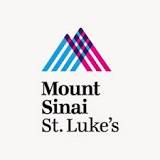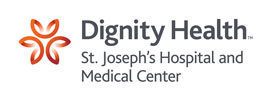Trial on Endovascular Aneurysm Management
| Status: | Terminated |
|---|---|
| Conditions: | Cardiology |
| Therapuetic Areas: | Cardiology / Vascular Diseases |
| Healthy: | No |
| Age Range: | 18 - Any |
| Updated: | 2/2/2019 |
| Start Date: | September 2006 |
| End Date: | December 2018 |
Safety and Efficacy of Endovascular Treatment of Unruptured Intracranial Aneurysms in the Prevention of Aneurysmal Haemorrhages: A Randomized Comparison With Indefinite Deferral of Treatment in 2002 Patients Followed for 10 Years
The management of patients with unruptured aneurysms is controversial. Patients with
unruptured aneurysms may suffer intracranial hemorrhage, but the incidence of this event is
still debated. Endovascular treatment can prevent rupture, but involves immediate risks;
furthermore, successful treatment does not eliminate all risks. A randomized trial may be the
best way to demonstrate the potential benefits of endovascular over conservative management
of unruptured aneurysms.
unruptured aneurysms may suffer intracranial hemorrhage, but the incidence of this event is
still debated. Endovascular treatment can prevent rupture, but involves immediate risks;
furthermore, successful treatment does not eliminate all risks. A randomized trial may be the
best way to demonstrate the potential benefits of endovascular over conservative management
of unruptured aneurysms.
This study is designed as a pragmatic trial. All candidates for endovascular treatment of one
or more unruptured intracranial aneurysms will be offered to participate. Unruptured
aneurysms may be recently discovered or prevalent. If they accept, subjects will be
randomized to one of the two arms of the trial: Conservative management (Observation) or
Endovascular treatment.
Both groups will be advised to obtain medical treatment for hypertension if necessary and
will receive counselling for behavioural risk factor modelling (smoking or excessive
drinking) when indicated. A non-invasive (MRA or CTA) or catheter angiogram and a baseline
CT-scan or MRI of the brain are required to enter the study. These studies should demonstrate
the unequivocal presence of a saccular aneurysm >=3 mm treatable by endovascular methods. A
catheter angiogram is required if there is doubt. Imaging studies will be reviewed centrally.
Both treatments will be standardized. Patients will be followed similarly for a minimum of 10
years.
or more unruptured intracranial aneurysms will be offered to participate. Unruptured
aneurysms may be recently discovered or prevalent. If they accept, subjects will be
randomized to one of the two arms of the trial: Conservative management (Observation) or
Endovascular treatment.
Both groups will be advised to obtain medical treatment for hypertension if necessary and
will receive counselling for behavioural risk factor modelling (smoking or excessive
drinking) when indicated. A non-invasive (MRA or CTA) or catheter angiogram and a baseline
CT-scan or MRI of the brain are required to enter the study. These studies should demonstrate
the unequivocal presence of a saccular aneurysm >=3 mm treatable by endovascular methods. A
catheter angiogram is required if there is doubt. Imaging studies will be reviewed centrally.
Both treatments will be standardized. Patients will be followed similarly for a minimum of 10
years.
Inclusion Criteria:
- At least one documented subarachnoid aneurysm, never ruptured
- Patient aged 18 or older
- Life expectancy more than 10 years
Exclusion Criteria:
- Patients with recent (less than 3 months) intracranial haemorrhage
- Lesion characteristics unsuitable for endovascular treatment
- Patients with a single extradural aneurysm
- Aneurysms < 3 mm or giant aneurysms (≥ 25 mm)
- Patients with a poor outcome (Rankin scale ≥ 3) after the rupture, surgical or
endovascular treatment of another aneurysm
- Patients with incompletely treated aneurysms that have previously ruptured
- Patients with associated arteriovenous malformations
- Patients with new severe progressive symptoms in relationship with the aneurysm
(sudden onset, severe persisting headaches suggestive of impending rupture,
third-nerve palsy, mass-effect)
- Patients with previous intracranial haemorrhage from unknown etiology
- Patients with multiple unruptured aneurysms in whom surgical clipping of one or many
aneurysms is planned in addition to endovascular management
- Patients with absolute contraindications to anaesthesia, endovascular treatment, or
administration of contrast material, including low-osmolarity agents or gadolinium
- Pregnant patients
- Patients unable to give informed consent
We found this trial at
7
sites
171 Ashley Avenue
Charleston, South Carolina 29425
Charleston, South Carolina 29425
843-792-1414

Medical University of South Carolina The Medical University of South Carolina (MUSC) has grown from...
Click here to add this to my saved trials
SUNY Downstate Medical Center Formally known as The State University of New York Health Science...
Click here to add this to my saved trials
St Luke's - Roosevelt Hospital Center With 523 beds, Mount Sinai St. Luke's serves as...
Click here to add this to my saved trials
Click here to add this to my saved trials
Click here to add this to my saved trials
Click here to add this to my saved trials
St. Joseph's Hospital and Medical Center St. Joseph's is a nationally recognized center for quality...
Click here to add this to my saved trials


